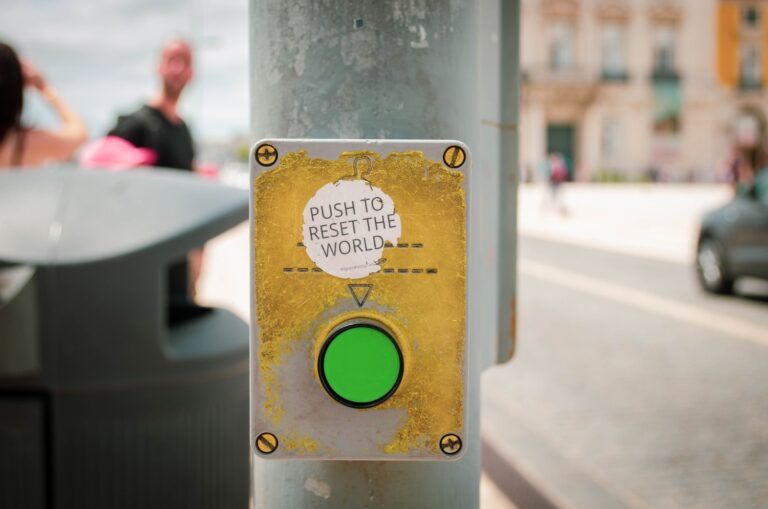Murphy's Law is here to stay. Learn how to live with it.
2020 reminded all of us in a significant way that Murphy’s Law is real and things rarely go as planned!
My wife and I had been crafting a complete itinerary for our first coast-to-coast trip in 2020. It was something we had anticipated for years. Instead, I got ample time to devote to my new business, The Product Sherpa, and became an absolute French Baguette expert. We got lucky, no one in the family got sick, but like 7 billion people, we had to adjust our plans.
So what lessons did we learn? How should we approach inevitable change in our lives and businesses? How does this translate to how product and business leaders should help their teams when facing Murphy’s Law?
Here are a few rules that I’ve been using with decent success with my teams while in the trenches. I might be stating some of the obvious, but realize that even the best-balanced individuals tend to become less rational when things go wrong. So, these can act as a solid reminder to help you get the best out of the next crisis your product team will eventually face (it’s a matter of when not if!).
#1 Calmly acknowledge the problem and understand the situation

Over the years, I’ve had to handle quite a few unpleasant conversations with senior executives and colleagues when we got hit by the unexpected. The good news is that, like 99.99% of you, I never encountered life-threatening situations in the office. It helped me forge an approach that I used as my golden rule:
Never, ever lose your calm. Not even when an angry customer or executive would yell at you to a deafening point. Not once.
Being disappointed is quite understandable, but getting upset is simply not going to change the problem or make things easier. Murphy’s Law and obstacles are a fact of life, and when you face such setbacks, you’re better off taking some distance and coming back to it when everyone in the team has calmed down. So don’t hesitate to cut any heated discussion that is escalating, even if it’s just for 15 minutes.
From there, the best thing I’ve seen happen was gathering people who understood the problem at hand. They would start assessing the situation together and reach alignment. Here are a few key questions that served us well:
- How can we best state the problem we’re facing?
- What are the root causes for this situation?
- What are the most likely consequences and their impact?
- What was under our control vs. out of our control?
#2 Reset expectations and assess your options

Start by making sure you properly reset expectations. I’ve been trying to anchor such reset by looking at how far we needed to go. There is a hierarchy of problems in every situation. So, I’ve typically started by looking at the current VMSA framework:
- Vision: what’s our desired destination?
- Mission: what are we about? What’s our WHY?
- Strategy: how do we make it work given our constraints and imperatives?
- Actions: what specific actions are we taking and which key performance indicators?
Then, given the nature of the problem we were facing, we’d ask ourselves at what level we needed to act. Let’s take an example. Suppose just one channel partner doesn’t want your product anymore. In such a case, you might stick with the current vision and mission and adjust your channel strategy and related actions. But suppose the issue is a more pervasive recall of your product with severe consequences on the nature of your offer. In that case, you will have to reconsider your mission and vision altogether.
Whatever the level you end up operating at, I’ve seen that the best response to Murphy’s Law always originated from us assessing different scenarios for the proposed plan. There’s rarely one single winning approach to a situation. It’s true in the product and business world too. You always end up choosing one strategy over the others. Yet, it’s best to consider your options upfront and build a good-better-best or worst-neutral-rosy set of scenarios.
#3 Learn from failure and build resilience

For a while, experts have been arguing about how necessary planning is. My take is that it’s worth it. Despite the pain, the alignment you gain from planning is priceless. The planning needs to come with the ability to monitor execution continuously and timely revising the plan if the results are not the expected ones.
That’s what resilience is about: progressing on your goals even if things do not go the way you planned.
I’ve seen the most resilient teams were the ones sticking to their vision even when things repeatedly didn’t go as planned. The past for them was more guidance than resentment. The team’s experience from series of failures ended up being useful when the time came to make bold, decisive moves.
Here are a few of the fundamental principles we kept top of mind when things didn’t go the way they should:
- It takes a LOT of minor setbacks to influence the big picture.
- Failure is OK. Own it, learn from it and expand from there.
- When trouble looms, make sure you ask for help and seek advice.
Embrace the unknown and keep thriving!
The bottom line is that Murphy’s Law and change are here to stay, and planning is becoming increasingly difficult for companies. Yet, it is worth it as a source of alignment between the different functions. Whether the outcome is better or worse than planned, make sure you contribute to establishing a learning culture that builds from the experience scars you’ve accumulated.
So, the next time you see things are not going as planned, remember the three rules to apply:
- #1 Calmly acknowledge and understand the situation
- #2 Reset expectations and assess your options
- #3 Learn from reality and build resilience
Keep digging, and if you come to a point where you feel stuck, don’t hesitate to reach out at tanguy@theproductsherpa.com. I’ll be delighted to be your guide!
